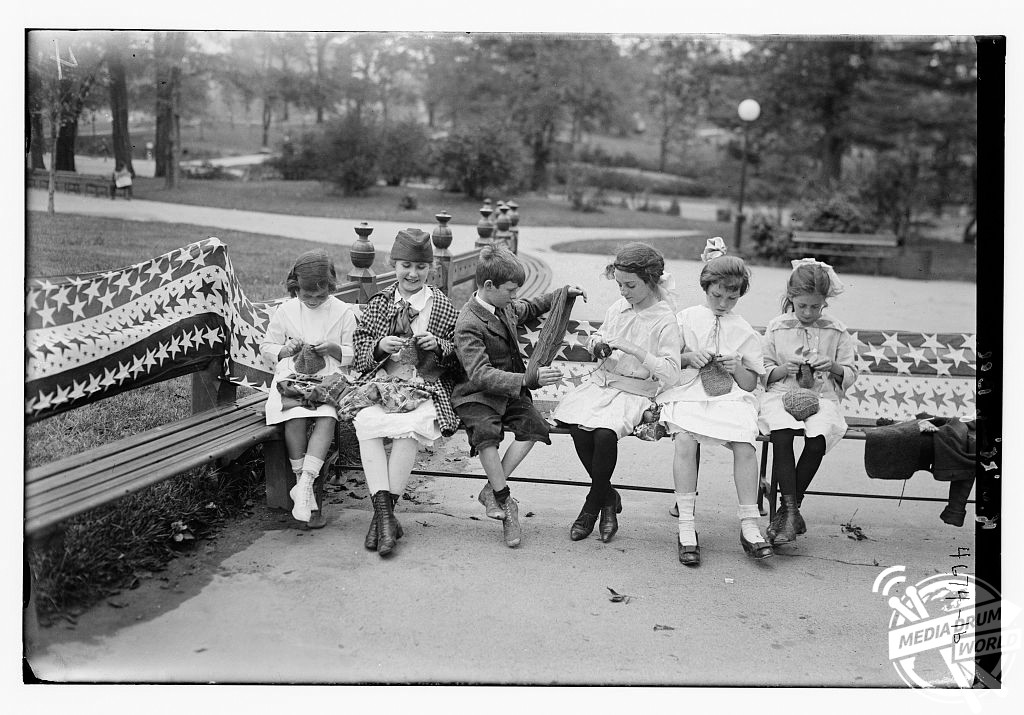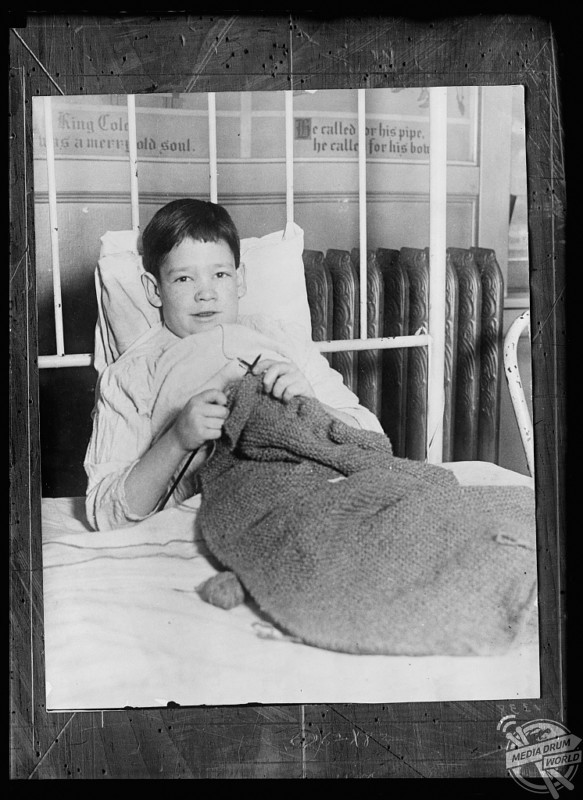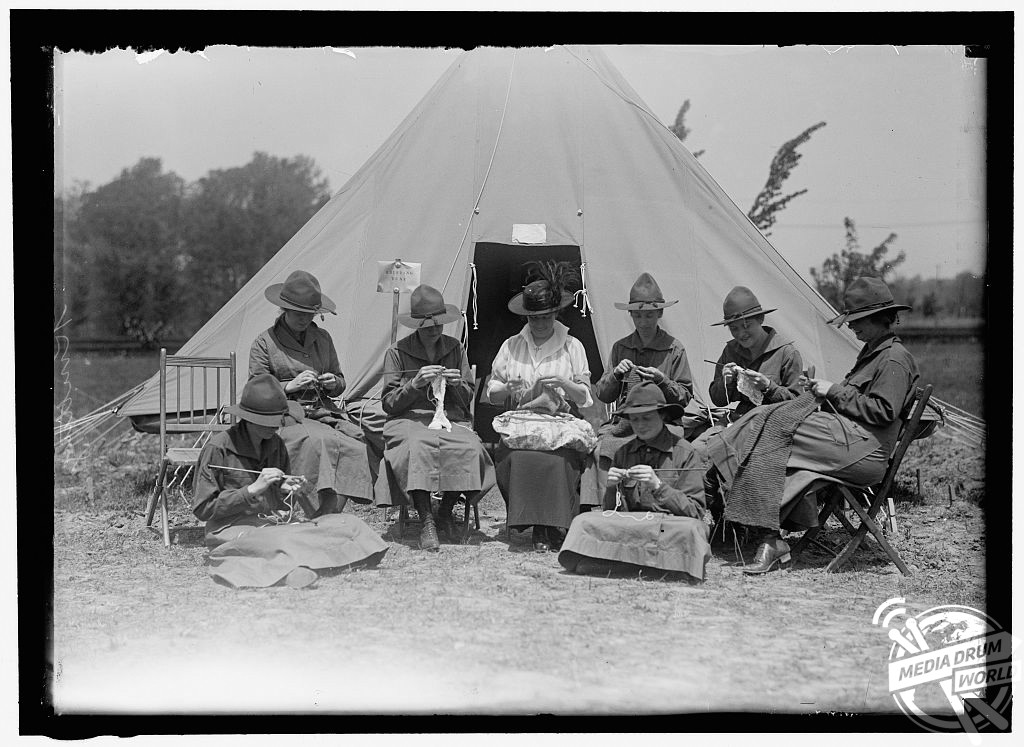
By Mark McConville
FASCINATING images have emerged showing the public getting behind the war effort during WW1 by knitting – in what became known as the Wool Brigade.
The pictures show men, women and children right across America at knitting bees and in Red Cross facilities.

Everyone played their part with even First Lady Eleonor Roosevelt pictured knitting and a young crippled Chicago boy knitting in his hospital bed.
The knitting was encouraged by multiple campaigns including the American Red Cross’ urge to ‘knit your bit’.

The need for warm clothes, particularly socks, was desperate. Men at the front were fighting in the atrocious conditions—muddy trenches and frigid winters—with inadequate footwear.
“The difficulty is to keep one’s feet warm,” wrote one officer in 1917. “One walks and they get warm, stand for one minute and they are icicles again.”

Soldiers also needed to keep their feet warm and dry to avoid frostbite and trench foot, and the best way to do this was to don clean socks regularly.
Knitting was promoted as a patriotic duty and after April 1917, the Red Cross and the Comforts Committee worked together to mobilize ever larger numbers of knitters, with a request for 1.5 million knitted garments.







